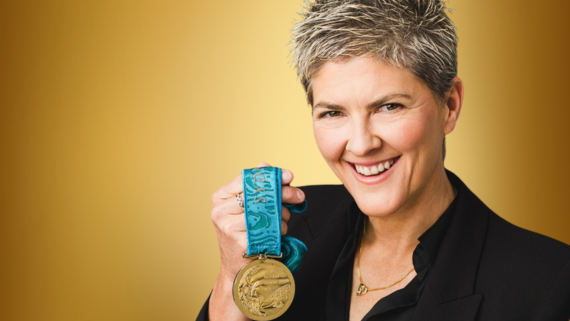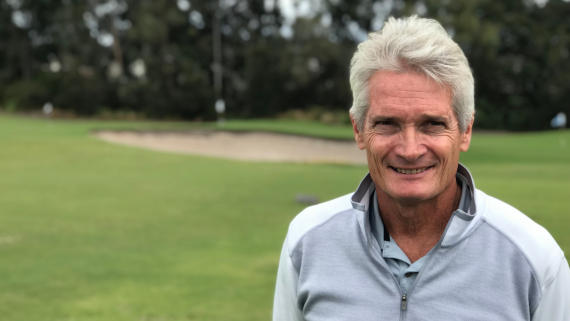
Subscribe to Spotify![]()
In this episode, our guest is Natalie Speers, the Founder & CEO of Social Ally, an agency in the digital marketing and social media space.
It was a great chat, in which we talk about how being an early adopter has pushed her out of her comfort zones, particularly in the social media space in the last decade. Natalie also shares some incredible social media stats that prove that everyone needs to use social media, regardless of your industry.
We then go through her list of common mistakes business owners and leaders make on social media and what they should be doing instead, and then we round up with her explaining what visual disruption – a term she coined – is and how to introduce it into your social posting strategy.
You can connect with Natalie Speers on LinkedIn or by email: natalie@socialallyusa.com.
Keeping up with the ever-changing social media landscape
- I visit various websites, such as Social Media Examiner and Social Media Today. I'll visit those three times a week to read the articles of anything up and coming that's new, and I'll be sure and relay that to my entire staff. And if it's something of extreme interest that directly impacts us and how we service our clients, then I'll do training on it with all of my staff.
- My best ideas come to me when I'm laying in bed and it's the middle of the night and I wake up and I have some sort of great idea, so I go and write it down in my phone and then I'll go research accordingly the following day.
Misconceptions of social media and some incredible stats
- The most common misconception of social media is that often times people think it's just for young people or a social media marketing strategy won't work for their industry.
- So, you have Facebook. Obviously, it's still the reigning champion. It has 2.27 billion monthly active users. That's a quarter of the entire world population, which is really crazy. The fastest-growing demographic on Facebook is ages 50 to 56 years old. So, again, it's not just about young people. All ages are on social media.
- Then, take a look at YouTube. YouTube is the second largest search engine below Google – 5 billion videos are watched per day and 300 hours of video are uploaded per minute! Instagram is more of a millennial-driven crowd; the 18 to 34-year olds are primarily using it.
- Twitter has 66 million monthly active users, and, interestingly, 34% of Twitter users are ages 25 to 34, favouring the side of females.
- A ton of millennials use Pinterest – as much as Instagram. The median age is 40, typically female and highly-educated.
- I like to refer to LinkedIn as a professional goldmine. It's a database for professionals by professionals. There is a lot of opportunity to be had on LinkedIn. Any business should define a LinkedIn prospecting strategy because I have seen a lot of success and lead generation come from LinkedIn.
Why you can’t afford not to use social media
- A lot of people come to me and for whatever reason, they don't think social media applies to their industry. So, to these people, I ask, “Do you not want your business to show up on a Google search when a user is searching for whatever service or product you're providing?!”
- Every minute there are 40,000 Google search queries happening. This equates to 3.5 billion searches a day!
- People are literally searching for answers to solve problems in their everyday lives by typing it into Google – they’re seeking authoritative content via social media channels, blogs, podcasts, YouTube videos. How you show up on a Google ranking is 85% based on your authoritative content, so if you're not doing social media and blogging etc. for your business, you're doing yourself a huge disservice. I can confidently say to you that if you don't implement a digital strategy, your business will eventually get left behind.
Some LinkedIn tips
- A LinkedIn search has a couple of different components to it. Most importantly, it's to do with how your profile is optimised.
- As an example, when someone searches on LinkedIn, obviously I want to rank for the keywords “social media” or “social media marketing.” And so, as many times – within reason – as I can incorporate that phrase or keyword throughout my profile, the better.
- Secondly, a lot of people don't use the Headline properly, in my opinion. If you go to my profile, you will see that it has all my keywords in my headline: “entrepreneur”, “social media marketing”, “lead generation”, “speaker”, “consultant”. So, eloquently insert your relative keywords throughout your headline and throughout your profile.
- L.I.O.N. means LinkedIn Open Networker and it signifies to people that you are open to network with whomever and not sifting who I'm going to accept as a connection.
The future of social media
- The reality of today's world is that our mobile phone is literally an extension of us. We've come to expect instant gratification, meaning that we have the ability to pick up our phone, shop online and have something delivered to us the same day. We have the ability to communicate with small brands, large brands on social and be provided with an instant response to a question we may have, or feedback we may provide. With that in mind, that means our customer is getting increasingly smarter, more tech-savvy and less patient.
- 92% of consumers trust peer recommendations, so people are literally turning to social media, online forums, blogs in order to make their purchasing decisions.
Engaging your audience
- Social media is becoming the easiest, most powerful tool you have available to you as a business owner and I love to refer to it as “world-of-mouth”; you have the world ready to listen, at your fingertips, and it's really just a matter of figuring out how to engage those people in something they love.
- There are so many people leaving different comments or writing direct messages or a public wall post. My advice is to respond, engage and provide something of value. Build rapport, as that is when people make an emotional decision to buy from your business.
- One of the most detrimental things you can do to your business is leaving negative feedback or comments un-responded to. Now often, from the business owner's standpoint, the consumer is probably far exaggerating what really happens. But it can literally ruin a small business because the owner didn't step up and provide a valid explanation. People want to be heard, so listen, as that's the essence of social media.
- People are just haphazardly posting things that they find interesting themselves, not what their audience finds interesting and that's key. If you really want your social media to start working for you, you really need to have a clear understanding of who your audience is, how old are they, what interests do they have, what hobbies do they have, who do they engage with online. So, knowing this information is going to allow you to create a real consistent posting strategy that resonates with your potential customer and what they care about. It's not what you care about. It's what they care about.
Leading a group of millennials
- So, I have a team of just under 20 people, mostly comprised of millennials and I myself am a millennial.
- I am a very, non-confrontational person; I like to avoid conflict and it makes me very uncomfortable. So I actually joined a peer-to-peer group called EO (Entrepreneurs Organisation) and it's a worldwide organisation of entrepreneurs. Business ownership comes with so many challenges and you always think you're the only one going through this, but the fact of the matter is that's not true.
- Greg: “I can say almost with certainty, that just about every CEO I've interviewed on this podcast has been in a mastermind or peer-to-peer group of some sort.”
Biggest mistake #1: Unrealistic Expectations
- Clients want social media, but sometimes they don't fully understand what that means. They just know it's a hot buzz word and they need it because their peers are doing it. They don’t fully understand what it takes to get from point A to point B. They think they can just post a video and all these leads come flooding in. If that was the case, everyone would be doing it themselves and there would be no need for agencies like Social Ally!
- So, use organic social media, meaning using unpaid social media, which is a long-term brand play. It takes time to build a community and it takes time to build rapport with your community, and this is done through really great content, providing value to your audience, engaging your users in something that they love, addressing pain points and solving their problems.
- Then, there’s paid social media. So that’s Facebook, Instagram, Google Ads. This is a shorter-term play, but it consists of a few components
- You must know what you are doing, otherwise, you will waste money. It's all about data-driven testing and making very strategic decisions. You have to figure out what your audience demographics are and what is going to entice them to click. It really just comes down to internet behavioural psychology
- You must have a consistent, organic social strategy.
- You must have a budget and be willing to lose it.
Biggest mistake #2: Not Visually Disrupting
- So, I want to put this into perspective for you. The average social media user scrolls through 300 feet of content per day. That is the height of the Statue of Liberty!
- Your job as a business owner is to visually disrupt people's newsfeed. Your job is to stand out, to make them stop and read your post or watch your video or whatever it is. Every day we're bombarded with advertisements and brands all around us. Visual disruption!
Biggest mistake #3: No KPIs or Data Analytics Monitoring
- People often put so much time and resource into their social media and then they love to complain about how it's not working for them. And they just write it off: “Oh, social media doesn't work for me. I tried it.”
- You should be monitoring cost per click. Cost per acquisition. If you’re not, you’re wasting your time and you should just stop and invest your time into areas of your business until you are ready to get serious and understand the power of digital marketing and really making data-driven decisions.
- Clients don't care about the pretty graphics that we are going to put out on their social media. They care about selling their product or service.
What is the final message of wisdom and hope for the next generation of executives?
- To all of you talented and amazing future executives, get ready for a wild ride. Owning and operating a business is the most difficult and challenging experience of your life. However, it's also the most rewarding and gratifying experience.
- You have to be willing to stick it out and fight through the day and never give up. I can tell you that there have been about 3 times I have come extremely close to shutting Social Ally because I couldn't handle the pressure and the stress, but I'm super lucky to have a support circle of friends and family and mentors who really kept me going with different encouragements and mentorship.
- One of the most gratifying things about being a business owner is having the ability to employ people and be a leader and mentor that your team looks up to.
Resources mentioned in the episode:
- Facebook Attribution Tool: this allows you to access the full conversion path, explaining to you what ads made people convert.
- LinkedIn Social Selling Index (you need to be logged in to LinkedIn)
- Book recommendation: Scaling Up by Verne Harnish
- Book recommendation: Traction by Gino Wickman
- Book recommendation: Expectation Therapy by Art Costello
MINI-MBA IN LEADING HIGH PERFORMANCE TEAMS
Limited spaces per intake







